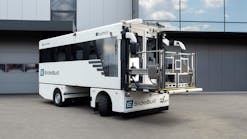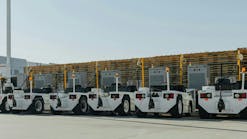The COVID-19 pandemic’s impact on the industry was severe. But the aviation world has been influenced by outside forces before, but the people supporting aviation have always rebounded with new approaches to accomplish the tasks at end.
Providing people with the tools to succeed and adapting to the preferences of new generations has always been key. For example, Matthias Moulinier – product and customer integration director at Adveez – points to the prevalence of technology in our lives and the generational acceptance of the latest tech.
“The new generation want to improve everything. They know technology is going to help,” Moulinier says. “Having new technology on GSE is key for the future – to improve safety, to improve operations and so on.”
Moulinier urges ground handlers to continue to advance their “old-school” approach and keep evolving to attract new talent to the ground support industry, especially considering the extensive employee turnover that took place as a result of the pandemic.
According to Moulinier, the mentality toward technology, and specifically with telematics, has changed following COVID.
“I would say before COVID, GSE operations were only interested by GPS position and how long the equipment was driven per day,” he says.
“All of our customers that were not looking at access control before COVID. Now, they all want to know who’s driving and how they’re driving,” Moulinier continues. “This is one of the new trends that is pushed a lot.”
With access control, harsh acceleration, braking and turning can be detected. This is a valuable tool with new employees. People who may need additional training can be identified and given additional instruction to ensure safe operations and avoid costly accidents.
Telematics can also assist with the environmental objectives that are on the minds of generations entering the workforce. Ground service providers or airlines can utilize telematics data to identify units having a negative impact on the environment and seek a replacement.
The efficiency of electric GSE can also be enhanced by telematics, Moulinier explains.
“We have a new algorithm based on artificial intelligence. The box knows when you are in a charging zone. We have, in real time, a state of charge for equipment. And with the algorithm, we can estimate when the GSE will be fully charged,” he says. “Internally, we know when the charger has been plugged into the equipment. This helps us to say the charging point has started. Depending on many criteria, we can say your GSE has been charged, you can disconnect and put on another one.
“This is going to improve their fleet management and their charger fleet management to make sure that they are used correctly.”
Moulinier also notes that the reasons for using new technology has changed, moving away from a punitive approach to an educational one.
“The mentality has changed where a couple of years ago, the access control was ‘I want to know exactly what you’re doing and fire you if I see something wrong.’ Where now it’s more about helping employees. ‘I want to know what you’re doing to improve your skills and improve your training, and make sure that you’re going the right things for safety reasons.”
The thought process regarding telematics is changing as well. Telematics solutions are not just for sending data to an equipment platform, Moulinier explains.
“Telematics is here to collect data, but it’s also here to prevent something that’s going to happen on the equipment,” Moulinier says.
“The trend is to help the driver avoid accidents.”
Technology will continue to advance, and it will remain imperative that ground service providers find the best use for it.
Moulinier points to artificial intelligence, more precise GPS data and 5G connectivity as new technology coming soon.
How has your operation implemented new technology platforms? What new technology will have the greatest impact on ground support opportunities.
I welcome your feedback on this topic and am interested in sharing your success stories. Email me with your thoughts at [email protected].





